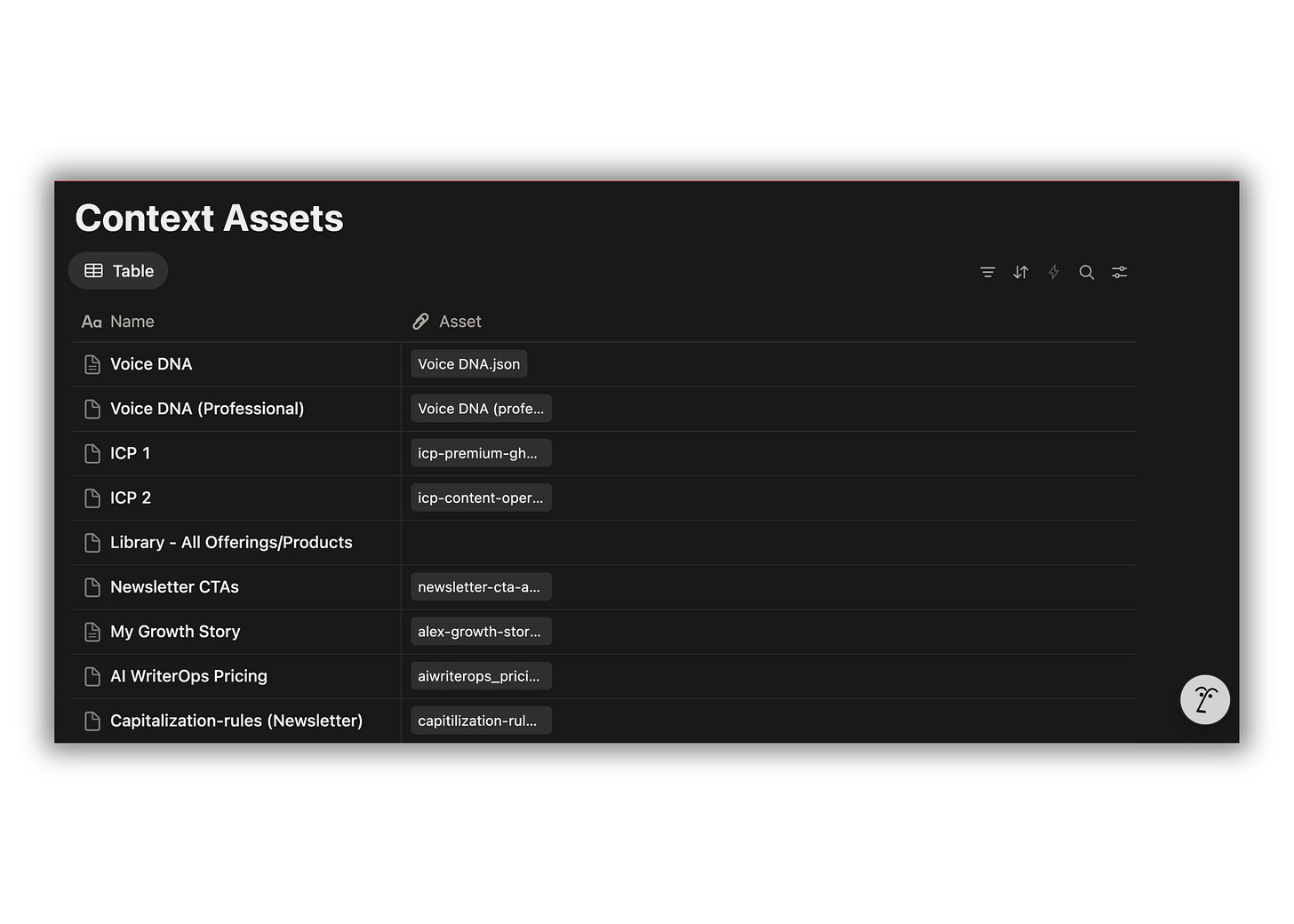7 habits that keep your AI context library performing at its peak
Your future self will thank you
You spent hours building your context library. You have Voice DNA, ICPs, product descriptions, context assets.
And it worked beautifully. Your AI started writing in your exact voice. It understood your audience. It nailed your positioning.
But here's something you absolutely cannot overlook: Context libraries need maintenance.
Your business evolves. Your products improve. Your voice sharpens. Your audience's needs shift.
When your context library stays static while everything else moves forward, you start noticing gaps. The AI output isn't quite wrong, but it's not quite right either. You find yourself editing more. Adding details the AI should know. Correcting outdated information.
The solution isn't rebuilding from scratch. It's developing maintenance habits that keep your context library current with minimal effort.
Think of it like maintaining a high-performance engine. Small, regular maintenance prevents major breakdowns.
The maintenance mindset shift
Your context library isn't a set-it-and-forget-it system. It's living documentation that powers your businesses.
The most successful AI operators treat their context libraries (+ any client libraries) like they treat their CRM or project management system. It’s something that needs regular updates to remain valuable.
This requires time investment, even if it’s just consistent, small actions that compound into major performance gains.
7 habits that keep your context library razor-sharp
1. Document every exceptional piece of content immediately (Daily)
Every time you create something exceptional—whether with AI or manual—immediately convert it into a context asset.
Notice when content absolutely crushes it
Save the ENTIRE context setup (not just the output)
Document the exact project instructions, ICP, context assets, and prompts used
Store it in your library immediately
This builds your playbook for recreating success on demand. Most people can't replicate their wins because they don't document the system that created them.
2. Run a weekly organization audit (Weekly)
A fast audit to ensure your context library stays organized and accessible.
Verify all new assets are filed under the right systems
Check that client folders contain current materials
Ensure use-case categories reflect actual work
Move any "temporary" assets to permanent homes
Delete redundant or outdated drafts
Storage recommendation: Use Notion for flexibility.
3. Update your existing assets monthly (Monthly)
A deeper review to update existing context assets with new information.
Product libraries: Add new features, remove deprecated ones
Service descriptions: Update based on current offerings
Frameworks: Refine based on what's actually working
Case studies: Add recent wins and results
Company information: Update team, metrics, positioning
Set a recurring calendar reminder or item in your planner.



